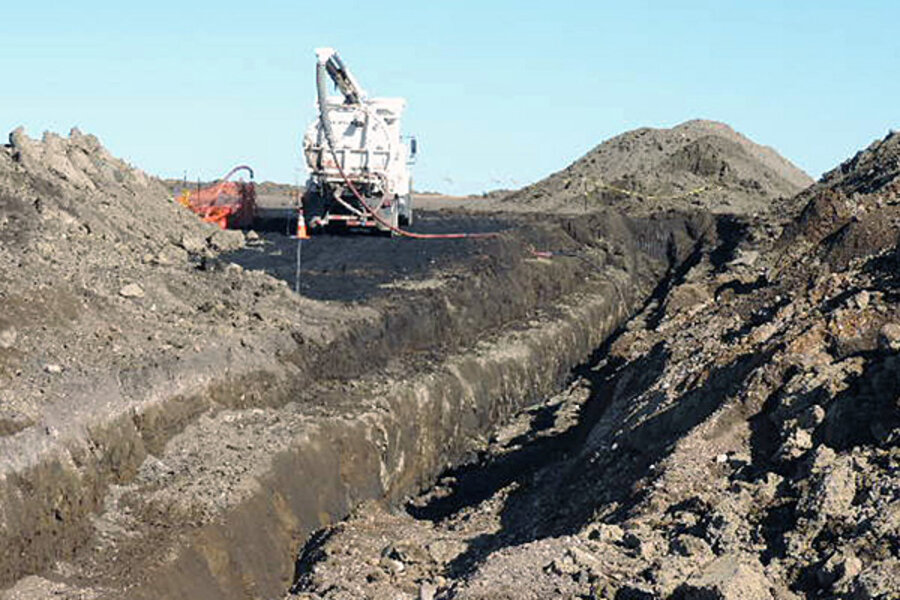Oil spill puts North Dakota back in the spotlight
Loading...
Oil production in North Dakota reached an all-time high in August. As of 2011, the U.S. Energy Department said the state was the fourth largest in the union in terms of oil production and North Dakota's oil accounted for 7 percent of the U.S. total, a 35 percent increase from the previous year. The state's Department of Mineral Resources said most of that crude oil would be able to make it to regional refineries so long as rail deliveries continue on their current trajectory. Scrutiny over crude oil deliveries by rail and the first major pipeline spill in the state, however, may dampen some of the state's optimism.
The North Dakota Industrial Commission, a division within the Department of Mineral Resources, published its monthly "director's cut" this week. Director Lynn Helms said 95 percent of all drilling in the state targets the Bakken and Three Forks formations. In April, the U.S. Geological Survey said those formations, spread out over North Dakota, South Dakota and Montana, contain a mean 7.4 billion barrels of undiscovered, technically recoverable oil. By August, the NDIC said production in the state reached 911,242 barrels per day, an all-time high. (Related article: North Dakota Farmer Stumbles on Massive Oil Leak)
North Dakota's shared border with Canada makes it a strategic state for North American crude oil transportation. Though the much-lauded Keystone XL pipeline from Alberta would sidestep North Dakota, there are more than 2,000 miles of pipeline under construction in the state at the heart of the U.S. shale boom. NDIC director Helms, however, said crude takeaway may depend in part on rail.
"Crude oil take away capacity is expected to be adequate as long as rail deliveries to coastal refineries keep growing," he said.
For the week ending Oct. 5, the Association of American Railroads said 12,640 carloads of petroleum and petroleum products, or about 8.8 million barrels of oil, were delivered on U.S. rail systems. That's a 7.5 percent increase from the previous year and part of a growing trend attributed to an overburdened pipeline system in the region. That increase caught the attention of the U.S. Department of Transportation, which in August started a "Bakken Blitz" on the rail industry. The probe followed a deadly explosion in Lac-Megantic, Quebec, of a train carrying Bakken crude oil to Canadian refineries. (Related article: Ecuador vs Chevron Case Gets Down and Dirty)
State regulators, meanwhile, are scrambling to assess what went wrong when at least 20,000 barrels of oil spilled from a ruptured pipeline in rural Tioga, in western North Dakota. Helms said inspections of the pipeline's interior walls conducted by operator Tesoro Logistics uncovered "serious problems." The company, however, wasn't aware of them until after the September spill.
The spill is North Dakota's first major black-eye in an otherwise spot-free history of mining for black gold. Helms suggested the state is looking to rail for crude takeaway and, with Tesoro's line closed, it may become more important in the immediate future. Rail's long-term potential, however, may be slowed by the DOT's "Bakken Blitz" inspection once the federal government returns to service. Meanwhile, it could be years before Tesoro's spill is cleaned up, a process the company estimates will cost about $4 million. While North Dakota's production will likely remain unscathed, how it copes with these new challenges may be a factor in its oil legacy.
Original Article: http://oilprice.com/The-Environment/Oil-Spills/North-Dakota-in-Spotlight-after-Oil-Spill.html





